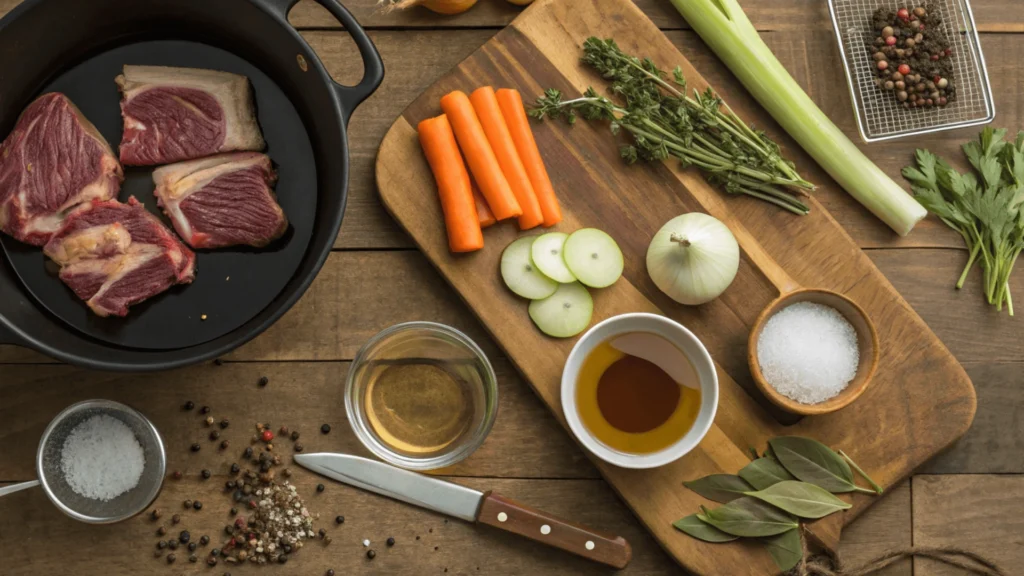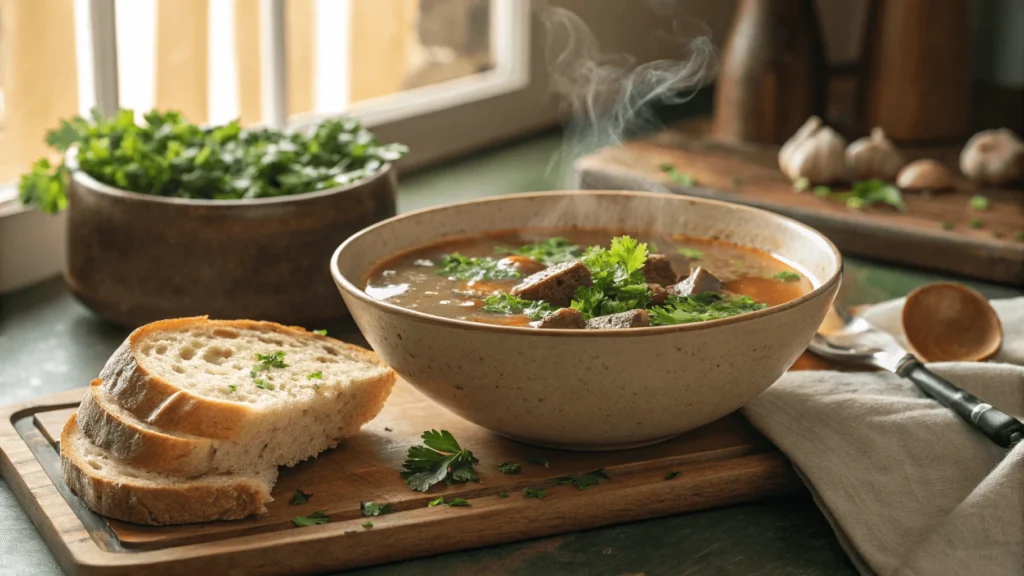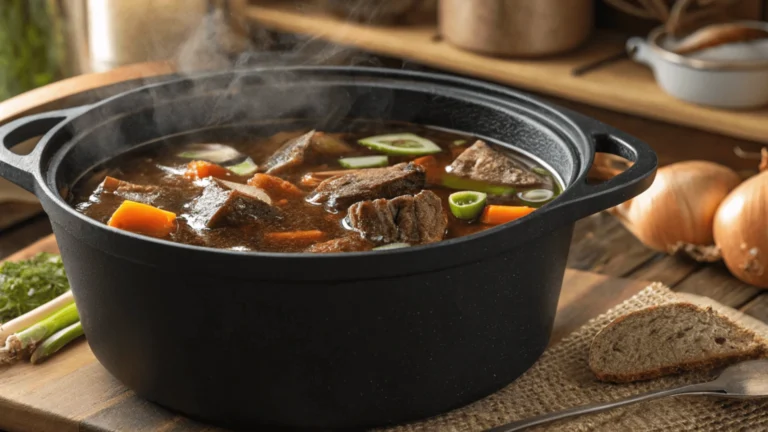Table of Contents
How to Cook Beef Bones for a Rich, Flavorful Broth
If you’re hoping to improve your culinary skills and make an nourishing and delicious recipe, knowing the art of cooking beef bones is an absolute must. When you’re creating a delicious stew, soup or an incredibly rich soup and stew, the bones of beef can be the key to unleashing the rich, powerful flavours. Making beef bones bring out the natural sweetness however, they also provide the base for all kinds of tasty recipes that nourish both the body and soul. This guide will guide you through the easy but rewarding procedure in cooking the bones of a beef to ensure you’re left with a flavorful, rich broth that makes each dish stand out.
Benefits of Cooking Beef Bones
In the kitchen the beef bones may not be the initial ingredient in your thoughts, but they do have amazing benefits, making an excellent choice. This is why you must take a look:
- rich in nutrient Beef bones are loaded with calcium, magnesium and the mineral phosphorus that can to maintain the health of bones. Furthermore, when slow-cooked, the bones produce gelatin and collagen. This is the protein you need that is beneficial for joint health as well as the elasticity of your skin.
- A riot of flavors The slow-cooking process draws all of the rich delicious, flavorful flavors from bones and creates an aromatic and rich broth that is suitable for use to make a variety of meals. This gives an unparalleled richness to stews, soups as well as sauces.
- Affordable and environmentally sustainable cooking bone meat isn’t only economical, it’s sustainable and a way of making all the parts that the animal. Bones help decrease food waste and provides the most nutritious and hearty foundation for your dinners.
- Helps with digestion Gelatin that is released by the marrow bones in beef can enhance gut health through supporting digestion and encouraging healthful linings of the intestines and stomach.
When you cook the bones of a beef, you’re not only creating an appealing broth, but you’re creating a nutritious and flexible base for a variety of meals which can help improve the overall health of your body.
Ingredients and Equipment Needed
| Ingredients | Quantity | Purpose |
|---|---|---|
| Beef bones | 2-3 pounds | Marrow bones, oxtails, neck bones, or shank bones – each provides a unique texture and flavor for the broth. |
| Water | 8-10 cups | The liquid base for your broth. |
| Aromatics (optional) | Carrots, onions, celery, garlic, bay leaves | Enhance the flavor of your broth with these fragrant vegetables and herbs. |
| Herbs & Spices (optional) | Fresh thyme, rosemary, peppercorns, dried parsley | Adds depth and extra layers of flavor to the broth. |
| Apple cider vinegar | 1-2 tablespoons | Helps draw out minerals from the bones during cooking for a richer broth. |
| Equipment | Purpose |
|---|---|
| Large pot or Dutch oven | Essential for simmering the bones for several hours and extracting the flavors. |
| Strainer or cheesecloth | Used to strain out bones and solids, leaving behind a smooth, clear broth. |
| Tongs | Helps handle the bones during cooking. |
| Cutting board and knife | For chopping the vegetables and aromatics before adding them to the pot. |
| Ladle | Used for serving the finished broth once it’s ready. |

How to Cook Beef Bones for a Rich, Flavorful Broth
Once you’ve got all the ingredients and equipment, it’s the time to cook the bones of beef! Follow these easy steps to make a delicious and delicious broth perfect to use in stews, soups, and many other dishes.
1. Roast the Beef Bones (Optional but Recommended)
- The oven should be heated to 400 degF (200degC).
- Put the bone pieces of meat on a baking tray and then spread them as a single layer.
- Bake for 30-45 minutes, rotating the bone half way through until they’re browned and caramelized. The caramelization will improve the taste of the broth and add the flavor of roasting, deep and rich.
2. Prepare Your Pot
- In a large saucepan or Dutch oven, place the roasted bones of beef and then cover them with 8 to 10 cups of water. The water must completely cover the bones.
- Let the water come to a simmer at medium-high temperatures. When it is boiling, turn down the temperature to a low level and scrape off any foam or impurities which rises towards the surface. This can help create a an uncluttered, clear broth.
3. Add Aromatics and Vinegar
- Include your cut vegetables (carrots and celery) and garlic into the pan. Incorporate bay leaves, as well as the spices or herbs you’d like to add.
- Incorporate 1-2 teaspoons apple cider vinegar. This will help draw minerals out of the bones and makes your broth more nutritionally rich.
4. Simmer the Broth
- Place the lid on the pot and allow the broth to simmer gently on low heat for a minimum of six hours. However, 12-24 hours are ideal to get the best flavor and greatest extracting of nutrients.
- Make sure to check the pot regularly and then add more water if it is low enough. It is important to ensure that the bones are covered with water.
5. Strain the Broth
- After the broth has been simmering, you can remove the pan from the stove and let it be cooled.
- Utilize tongs to take bones from the broth and then run the broth through an fine mesh strainer or cheesecloth, removing any leftover solids. The bones and the vegetables should be discarded and compost it if you want to.
6. Final Touches
- Check the broth for taste and then adjust your seasoning by adding salt and pepper according to the taste you prefer.
- Let the broth fully cool, and then store it in airtight containers within the freezer or in the refrigerator to be used later.

Conclusion
Cooking beef bones for a rich, flavorful broth is a simple yet powerful way to elevate your cooking and nourish your body. By following these easy steps, you can create a deep, savory broth that serves as the perfect base for soups, stews, sauces, and more. Not only does this homemade broth provide rich flavors and essential nutrients, but it also allows you to enjoy the comfort and satisfaction of cooking with wholesome, sustainable ingredients.
Whether you’re using it for a quick sipping broth, making a hearty soup for the family, or adding depth to your favorite recipes, beef bone broth is an incredibly versatile addition to your culinary repertoire. So, next time you’re in the kitchen, grab some beef bones and create something that’s not only delicious but nourishing too. Enjoy the rich flavors and health benefits with every delicious spoonful!
FAQs About Cooking Beef Bones
1. Are there any bones of beef which have been previously employed in the preparation of a different dish?
- Yes! If you still have bones that you ate from a roast or other dish that you cooked, you could still make use of the bones to create broth. Be sure to cook the bones again in order to enhance the flavors and make sure there is no waste of the bones.
2. What time should I simmer beef bones in order to get the most flavorful broth?
- To make a delicious and rich broth, cook beef bones for at minimum 6 hours. Although 12-24 hours can yield the best nutritious and delicious product. The longer that the bones cook in the broth, the more flavorful it is likely to be.
3. Do I have the ability to make beef bone broth using the slow cooker?
- Absolutely! The slow cooker is ideal for preparing bone broth from beef. Just add the bones you have roasted and aromatics, as well as water as well as vinegar to the slow cooker, turn it at low, then cook it for anywhere from 8 to 12 hours (or more time for stronger taste).
4. Do I have to use any kind of bone from beef?
- You can utilize different types of beef bone such as marrow bones, shank bones and oxtails and neck bones. Every type of bone has an individual texture and flavour which is why you should explore!
5. How can I keep the remainder of bones from beef?
- Keep your bone broth from beef in airtight containers and keep it in the fridge for four days. If you’d like to store the broth longer, store the broth in a freezer for as long as 6 months. Just thaw it and heat it up whenever you’re ready for it.
6. What should I do with remaining beef bones that I have made after making a broth?
- Following the making of the broth bones tend to be discarded and disposed of. If you’re interested in the process of composting, you can use bones in order to return to the soil. There are people who use bones that remain to make pets’ food (just be sure that the bones are cool and clean).
7. Does it make sense to cook the bones first before you can make broth?
- The roasting of the bones is not required however it is highly advised. The oven roasting increases the flavor of the broth, as it caramelizes the natural sugars present in bones. It also gives the broth an even deeper and more rich flavor.

